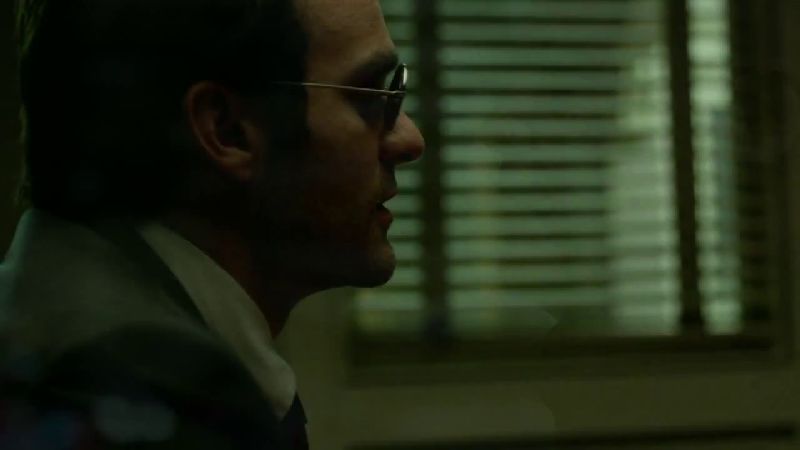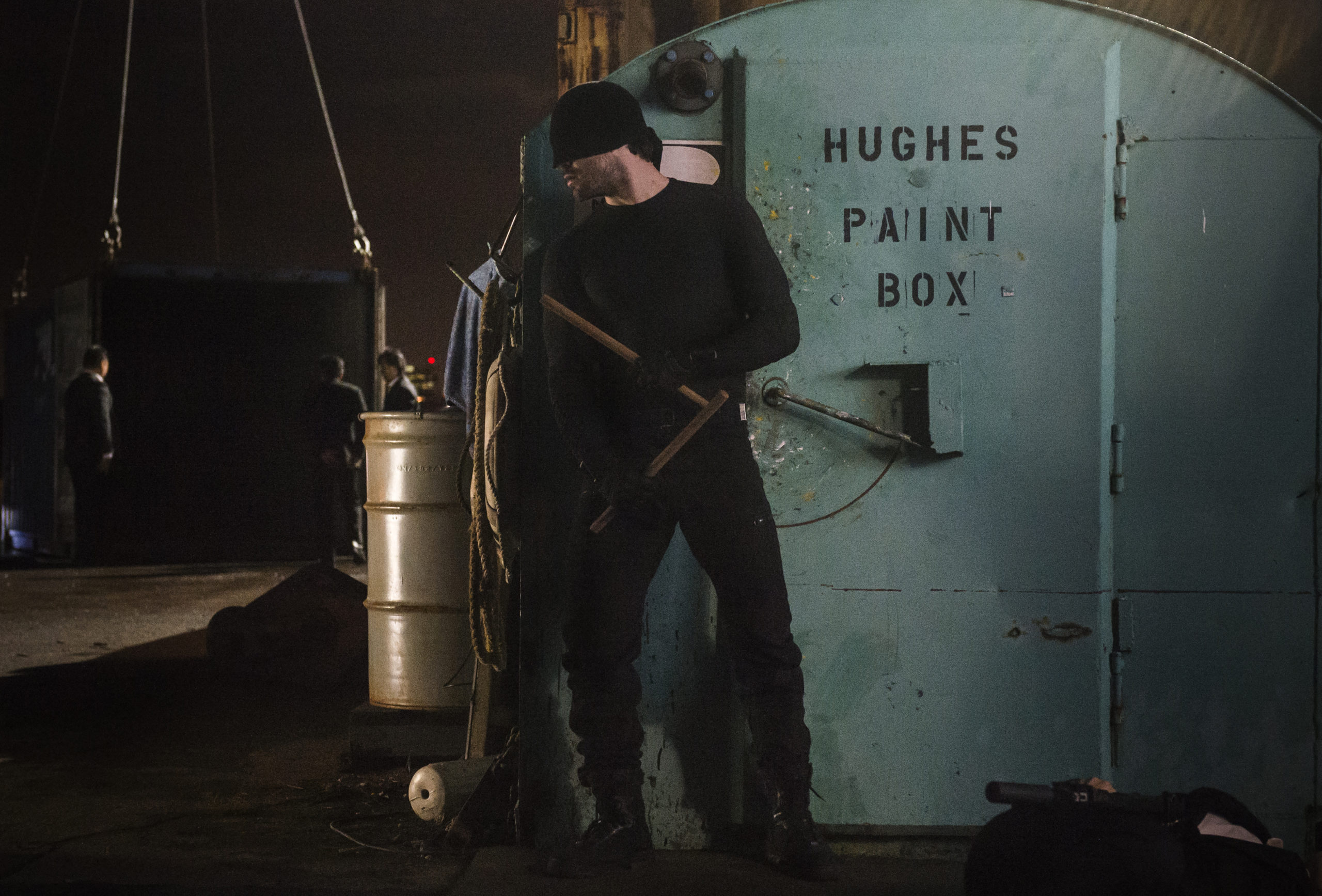When I first started reading comics, there were occasions where I’d mix up proper reading order. This led to flipping through issues that didn’t make a lick of sense to me, and only upon backtracking did my questions get answered – Jeopardy style. Well, that happened again. Through some unknown error that I can only blame on my own stupidity (Ed. Note: I blame Bilal), my pilot to this amazing series was, in fact, episode four. Needless to say, my view of the show is, shall we say, warped. Due to this chapter being so action packed I fear that I’m spoiled as a result. Since learning of my mistake, I’ve gone back and re-watched the first four episodes in their proper order, trying to condition my brain to see the series as it was intended. However I’m too far gone; this episode has such impactful moments that I don’t think my first impression can be unlearned.
This error means my opening didn’t start with the pivotal chemical spill, but with Vladimir and Anatoly fashioning shivs from ribs. An odd opening, but not a bad first impression; it certainly conveyed the series’ tone. The rest of the story unfolded like an episode of The Wire, as characters interacted with each other like I should already know what they were talking about; I loved it. I figured we were picking up the series in extreme medias res, and that the subsequent episodes “Cut Man” and “Rabbit in a Snow Storm” (yes, I oddly got back on track) were flashbacks meant to enlighten us to how Wilson Fisk started a gang war.
Hey, it made sense at the time. Open with a bang, and this episode did exactly that. Full of everything fans waiting for this series could ask for: the aforementioned rib usage, a slight Avengers reference, an appropriate amount of Foggy, and of course Matt and the Kingpin being ruthless in their own special ways.

For you readers who watched the episodes in their correct order (which I’m assuming is all of you) and patiently waited to see Mr. Fis- err, “Wesley’s employer”, I can only imagine the impact Vincent D’Onofrio’s chilling portrayal of the Kingpin had on you. His quavering whisper-speak as he courts Vanessa is chilling. When she evades his request for a second date, I wondered if he was about to kill her right then and there. Thankfully (for her) he does not; focusing his anger on poor, level-headed Anatoly, who after tarnishing Wilson’s image, doesn’t fare nearly as well. Though Fisk’s reaction is extreme, it stems from an emotion we can identify with: embarrassment. As he recounts his childhood to Vanessa, we see a sympathetic vulnerability. These emotions make him the most real villain in the Marvel universe; they humanize him . Sure, most – if not all – of the other Marvel villains are everything but human, but you get my drift. We see the cracks and identify with him; heck, I even like him.
On the lighter side of the moral gray spectrum these character inhabit is Matthew rescuing Claire from a brutal interrogation. We don’t actually see her getting hit, but the baseball bat combined with her bloodied body and Rosario Dawson’s stellar acting, are all we need. It’s an example of how this show is graphic without being overtly so. As Matt proceeds to dismantle the thugs with stealth and terror, it isn’t hard to see why we compare him to Batman. The origins, mortality, and flexible – yet rigid – morality, all lend themselves to an easy comparison of the two. The fight scene in the dispatch garage isn’t going to make avoiding that comparison any easier. It’s exactly like the shipyard scene in Batman Begins! People can say that in a positive or negative tone, but as a Batman fan as well, I choose the former. Compared to the violent fights in the bowling alley or shipping yard, we don’t actually see that much violence but the effect is felt. It’s another example of how this series toes the line of being violent without being gratuitous. (If they “turned it up to 11” a hopeful Punisher series would have nowhere to go.)
Realism has been one of the main endorsements to this series. Aesthetically, the sets, combat, and muted color palette, were my first impressions of this. Perhaps the truest aspect of this authenticity is its multicultural cast and the sustained use of subtitles. These choices validate the metropolitan quality of Daredevil’s world. Casting Black, Hispanic, and Asian actors just makes sense when recreating Hell’s Kitchen. By having theses characters speak Spanish, Russian, and Chinese (even if they aren’t subtitled) viewers are cognizant of the multicultural tapestry that makes up the neighborhood. Now, Hell’s Kitchen is on the rise as more high-end apartments pepper the neighborhood, but Daredevil corrupts this real-life gentrification by placing Wilson Fisk as the profiteer behind these shady white collar deals.
This episode exemplifies why the Kingpin and Daredevil are fan favorites; where Matt has a darkness to his good will, Wilson has an endearment to his brutality.

